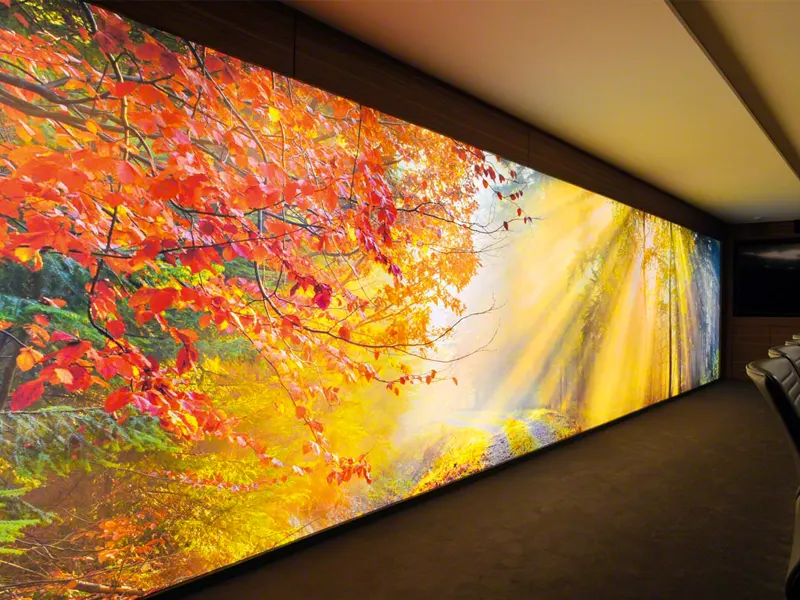
Indoor LED Screens Introductory Guide
As someone who’s been in the LED screen industry for a decade, I’ve seen firsthand how technology has evolved and revolutionized. Whether you’re in a retail space, a corporate office, or a large venue, indoor LED screens have become a go-to solution for dynamic, high-quality displays. Today, I want to share some of that experience with you. I hope to help you understand what these screens are all about and why they might be the perfect choice for your needs.
What are Indoor LED Screens?
Indoor LED screens are large, bright, and vibrant digital screens used inside buildings for various purposes. They can be for advertising, entertainment, or information. Unlike traditional display technologies, LED screens use light-emitting diodes to produce bright and vivid images with high contrast and color accuracy. This makes them ideal for environments where clear, impactful visual communication is critical.
When I first started in this industry, the technology behind LED screens was still relatively new. At that time, we could only find single or dual color LED displays. But over the years, the improvements have been remarkable. Today, indoor LED display screens are synonymous with quality and reliability. They have become an essential component of modern indoor advertising and communication strategies.

Advantages of Indoor LED Screens:
One of the reasons I’ve been so passionate about indoor LED screens is their incredible versatility and performance. Here are some of the advantages that I’ve seen resonate most with clients:
- Brightness and Visibility: Even in brightly lit environments, indoor LED screens maintain their clarity and brightness. This is something that LCD screens and projectors often struggle with. Generally, the brightness of LED screens indoor is at least 600 nits. In some occasions, we can also make it 1,500 nits or more. Whether it’s a busy shopping mall or a well-lit conference room, the content remains visible and engaging.
- Seamless Design: An indoor LED screen wall is made up of multiple LED panels. It can create a seamless and uninterrupted display. This ability to create large, continuous images is a significant advantage in many settings, from high-end retail stores to large auditoriums.
- Energy Efficiency: LED technology is known for being energy-efficient. As a result, it can save your bill. The common max. power consumption of an LED panel screen indoor is about 500 W/㎡. And the operation power can be as low as 250 W/㎡.
- Longevity: Indoor LED screens are built to last. With proper maintenance, they can serve you for years. In theory, the LED display lifespan is between 60,000 to 100,000 hours, equal to 7 to 11 years.
- Versatility: From LED display screen for advertising indoor in shopping malls to indoor LED screen hire for various events, it means there’s a solution for every space and need.
Different Types of Indoor LED Screens:
When it comes to indoor LED screens, there’s no one-size-fits-all solution. Here are some of the different types you might consider:
- Fine Pitch LED Displays: These displays are fixed installation generally. It means they are installed in a permanent location. They’re ideal for places like high-end retail stores, control centers, etc. We classify types below P2 into fine pitch LED displays. The common types include P1.25, P1.538, P1.86.
- Indoor Rental LED Screen: These screens are designed to be moved and are perfect for events, exhibitions, or any situation where the screen needs to be relocated frequently. Types include P2.604, P2.976, P3.91, and their cabinet sizes are 500×500 mm or 500×1000 mm.
- Flexible LED Screens: Flexible LED screens are designed to be curved or bent, making them suitable for unique and creative installations. They are often used in unconventional spaces where traditional flat screens wouldn’t fit, such as around pillars or in curved video walls. Common pixel pitches for flexible LED displays include P1.86, P2, and P2.5. These screens offer versatility in design without compromising on image quality.
- Transparent LED Screens: They are used in environments where it’s important to see both the digital content and the background behind the screen. They are commonly found in retail windows and corporate lobbies. These screens have a lower pixel density compared to other types but offer the unique advantage of transparency. Typical pixel pitches range from P3.91 to P7.81.

How to Choose a Suitable Indoor LED Screen?
Selecting the right indoor LED screen involves considering several factors based on your specific needs and environment. Here’s a breakdown of what to keep in mind:
- Application: The first step is to clearly define the purpose of the LED screen. Are you using it for advertising, presentations, or entertainment? For instance, a fine pitch LED display might be ideal for corporate boardrooms where high resolution is crucial, while a flexible LED display could be better suited for creative installations in retail environments.
- Viewing Distance: The distance between the screen and the audience is a key factor. If the screen will be viewed up close, such as in a small conference room, a smaller pixel pitch (like P1.25 or P1.5) is recommended to ensure clear and detailed images. For larger spaces where the audience is further away, a bigger pixel pitch (such as P2.5 or P3) may be sufficient.
- Brightness Requirements: The brightness level needed depends on the lighting conditions of the installation site. In brightly lit environments, such as shopping malls or airports, a screen with higher brightness (around 1,000 to 1,500 nits) is necessary to ensure visibility. For dimmer environments, a screen with lower brightness can be used without compromising image quality.
- Installation Space: Consider the physical space where the indoor LED screen panel will be installed. If the space is limited, a thin, lightweight screen or even a transparent LED display might be more suitable. For areas with unconventional shapes or surfaces, flexible LED screens provide the versatility needed to fit the screen seamlessly into the environment.
- Budget: Budget is always an important factor. Indoor LED screen price varies mainly depending on size and pixel pitch. While fine pitch LED displays offer superior image quality, they are generally more expensive. If the budget is limited, you may need to balance pixel pitch and brightness with cost, opting for a screen that meets your needs without exceeding your budget.
- Maintenance: Finally, consider the ease of maintenance. For locations with limited access behind the screen, a front maintenance LED screen allows for easy servicing without requiring rear access. Most of indoor advertising LED display screen projects are with front maintenance. The common cabinet used is die-casting aluminum. The thickness is only about 6 cm.

Installation Guide of Indoor LED Screens:
Installing an LED display screen indoor requires careful planning and attention to detail. Here’s a simple guide to help you get it right:
- Site Assessment: Start by evaluating the installation site. Check the available space, lighting conditions, and structural support. You can have an idea about the size of the LED screen you will install. This step should take place before you purchase the screen.
- Prepare the Mounting Structure: Once the site is assessed, you can prepare the mounting structure. For the wall mounted LED screen, you need to ensure the wall is strong enough to hold it. If you’re using a stand, double check that it’s stable. The structure should be secure to prevent any accidents.
- Set up the Screen: Set up the LED screen indoor according to the manufacturer’s instructions. In MuenLED, we attach serial numbers on the back of cabinets for all projects, and our clients can set up the screen according to them. It can save time on the setup and operation. The important thing is to make sure all the connections between panels are tight to avoid any gaps in the screen.
- Connect the Power and Data Cables: After you set up all cabinets, you can start to connect the power and data cables between them. We also make the drawings of this step for all LED screen projects. During this process, you need to assemble all LED display modules on the screen. Why? As now almost all projects are fine pitch LED displays, we disassemble all modules after the testing from the screen. It is better during the transportation, because it can avoid damage.
- Power on the Screen and Play: Now you can power on the indoor LED wall screen. And send the contents via the software. We have configured the screen well before the delivery. Therefore, you don’t need to configure it if you set up the screen according to our drawings as mentioned above.
Applications of Indoor LED Screens:
Over the years, I’ve seen indoor LED screens being used in various innovative ways. Here are some common applications:
- Retail: Indoor LED advertising screens are perfect for retail environments. They capture attention, showcase products, and create a modern shopping experience.
- Corporate: Many businesses use indoor LED screens in their offices for presentations. In lobbies, they can display company information, welcome messages, or branding visuals. In conference rooms, they offer a high-quality display for video conferences and presentations.
- Entertainment: At concerts and other events, indoor LED screen rentals are essential for displaying live video feeds. They help ensure that everyone in the venue has a clear view, regardless of where they’re seated.
- Airports: Indoor LED screens are commonly used in transportation hubs like airports. They display flight information, schedules, announcements, and advertisements. Because of their high brightness and clarity, they ensure that passengers can easily see important information, even from a distance.
- Churches: We can commonly find LED screens in churches. They can enhance the worship experience in meaningful ways. They can display song lyrics, scripture passages, and sermon points clearly for the entire congregation. It makes it easier for everyone to follow along, no matter where they’re seated. Besides, churches also use LED wall screen display indoor to integrate multimedia elements like videos and live streaming.

Are Indoor LED Screens Better than Projectors?
LED screens or projectors, which one is better? The answer depends on your needs. However, in many cases, indoor LED screens offer several advantages over projectors:
- Brightness and Clarity: Indoor LED screens offer superior brightness and clarity. As a result, they can perform better in well-lit environments.
- Maintenance and Longevity: Projectors require frequent maintenance, such as bulb replacements, while LED screens are more durable.
- Flexibility: LED screens can be installed in a variety of ways, including wall-mounted, freestanding, or even curved configurations. This flexibility makes them suitable for different spaces and design requirements. Projectors, however, require careful positioning and alignment, and the image size is limited by the distance from the screen.
- Image Quality: LED screens provide sharper and more vibrant images. Projectors, on the other hand, may suffer from lower resolution and color accuracy, especially if the projection surface isn’t perfect.

Trends of Indoor LED Screens:
The future of indoor LED screens is exciting, and there are several trends I’m particularly excited about:
- Higher Resolutions: As technology advances, we’re seeing more screens with 4K and even 8K resolutions. They offer incredibly detailed images. So far, we can commonly see fine pitch LED displays in most applications, including P1.25, P1.538, P1.86, and so on. We believe there will be much smaller pitch types below P1 in the near future.
- Interactive Screens: Touch-enabled indoor LED screens are becoming more common, allowing for interactive displays that engage users more deeply.
- Sustainability: As businesses focus more on sustainability, there’s a growing demand for energy-efficient, eco-friendly LED screens.
Conclusion:
Indoor LED screens have transformed how we communicate, advertise, and entertain. They offer a dynamic, versatile, and long-lasting solution that can adapt to virtually any indoor environment. Whether you’re looking to upgrade your retail space, enhance your corporate office, or create a stunning visual experience at an event, indoor LED screens are a powerful tool.
If you’re considering investing in an indoor LED screen display, you can contact us.
-
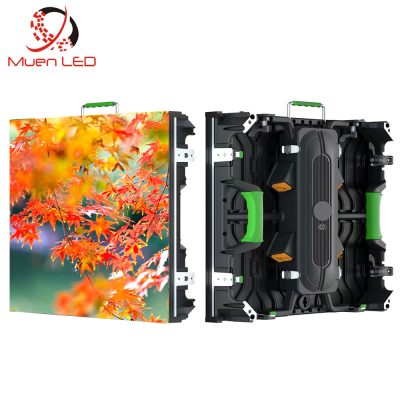 AIRD2.976 LED display for indoor rental Indoor Stage Dance Floor P3 Hd Led Screen Video Wall Panel Pantalla Led$148.00
AIRD2.976 LED display for indoor rental Indoor Stage Dance Floor P3 Hd Led Screen Video Wall Panel Pantalla Led$148.00 -
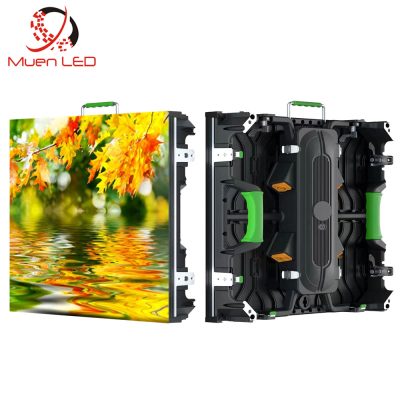 AIRD3.91 LED display for indoor rental Stage LED Backdrop Screen Background 500×500 LED Panel$118.00
AIRD3.91 LED display for indoor rental Stage LED Backdrop Screen Background 500×500 LED Panel$118.00 -
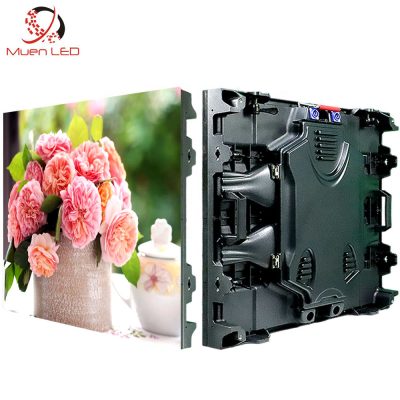 AIRB2.5 Indoor rental display$221.00
AIRB2.5 Indoor rental display$221.00 -
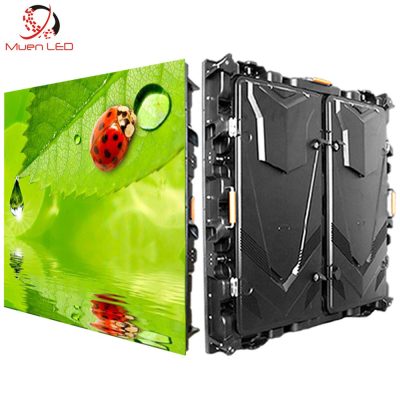 AIRA5 Indoor led display$316.00
AIRA5 Indoor led display$316.00 -
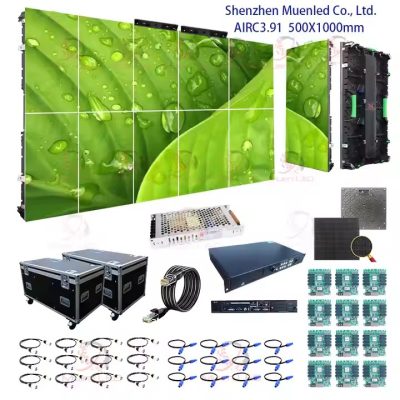 AIRC3.91 3X2 m indoor stage rental LED display Price$2,999.00
AIRC3.91 3X2 m indoor stage rental LED display Price$2,999.00 -
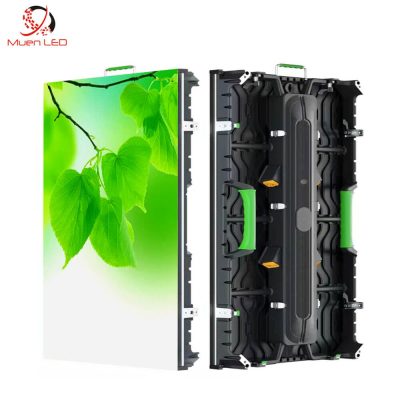 AIRC3.91 LED display for indoor rental$299.00
AIRC3.91 LED display for indoor rental$299.00